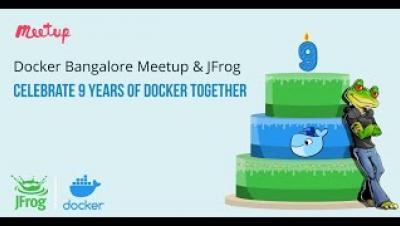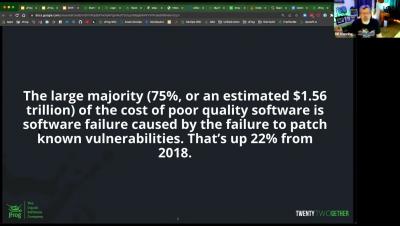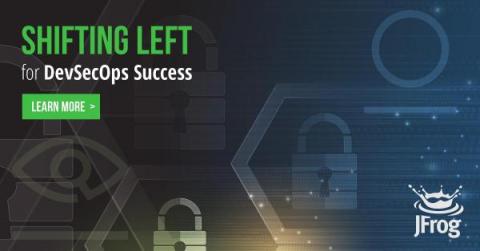Operations | Monitoring | ITSM | DevOps | Cloud
DevSecOps
JFrog Connect: Ready for What's Next for DevSecOps, Edge and IoT
A Joint Meetup: Docker Bangalore & JFrog Bangalore celebrate Docker's 9th Birthday
The Top 10 Best DevSecOps Tools for 2022
DevOps vs. DevSecOps: What Are the Differences?
I've never really been sure how DevSecOps differs from plain-old DevOps, but over the past year I think there's finally something enough there to have a notion. To be concise, DevOps-think makes software delivery better by moving operations concerns closer to development with the help of a lot of automation and process change.
Understanding and Implementing a Software Bill of Materials
Software programs today can be likened to a complex stew, with multiple ingredients sourced from disparate places. In software, open-source tools are a major ingredient. According to the 2020 Open Source Security and Risk Analysis (OSSRA) report produced by the Synopsys Cybersecurity Research Center, 99 percent of the codebases contain at least one open source component, with open source comprising 70 percent of the code overall.
Shifting Left for DevSecOps Success
Shifting Left for DevSecOps Success
ITOps vs. SecOps vs. DevOps vs. DevSecOps
ITOps, SecOps, and DevOps may sound similar. Indeed, they are similar - to a degree. But they have different areas of focus, different histories, and different operational paradigms. Keep reading for an overview of what ITOps, SecOps, and DevOps mean and how they compare. We'll also explain where DevSecOps fits into the conversation - and why you shouldn't worry so much about defining these terms perfectly as you should about finding ways to operationalize collaboration between your various teams.











